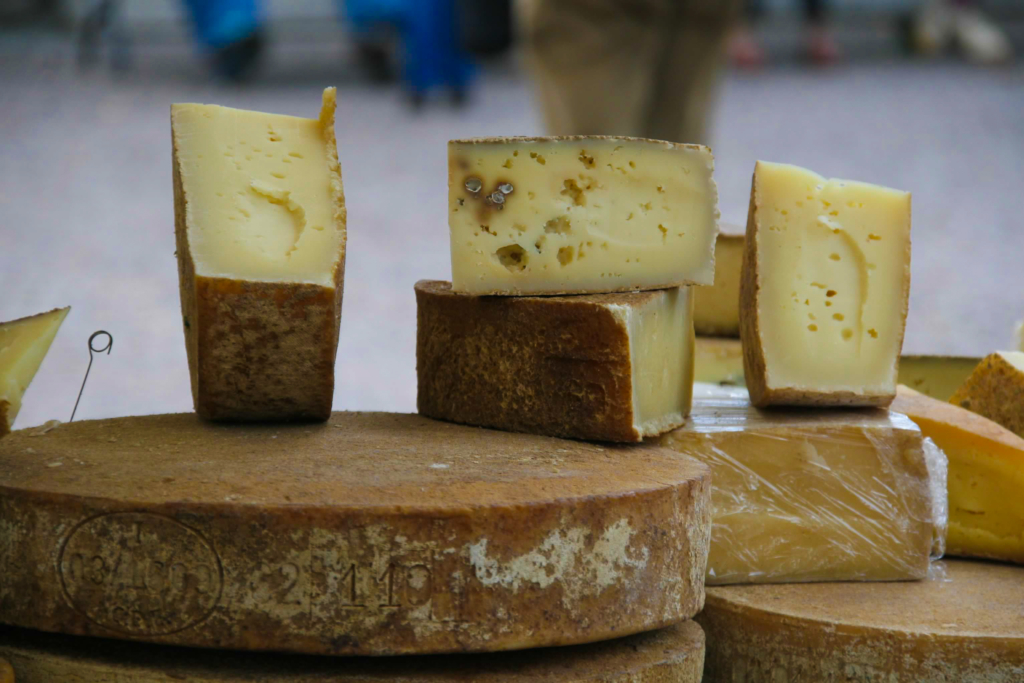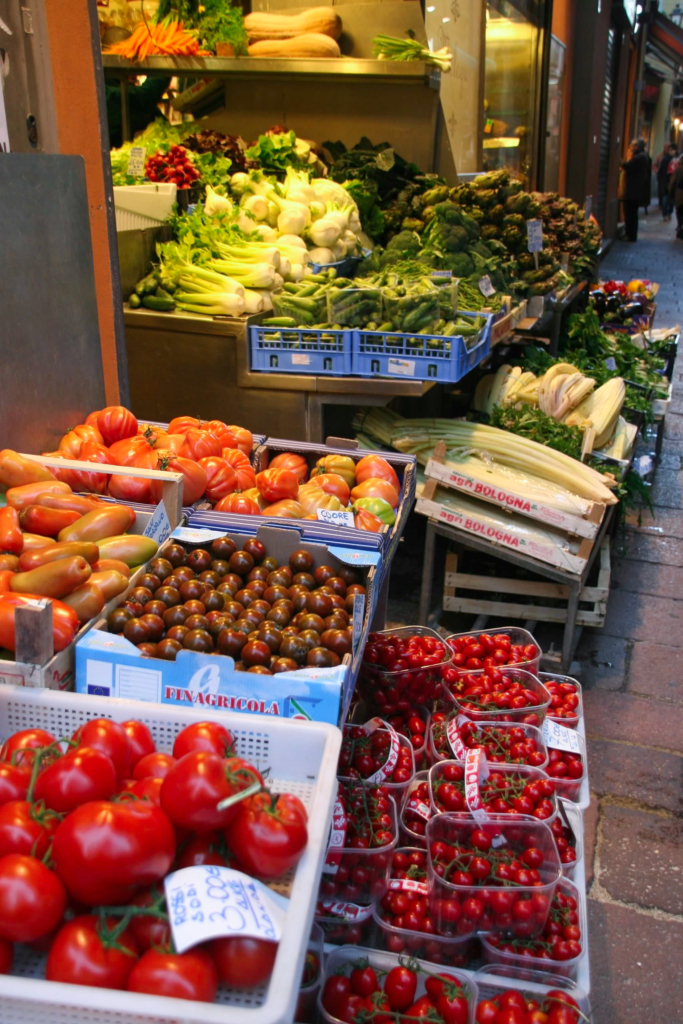Since we had family members arriving tomorrow during our 45-day trip to Tuscany and Normandy it was time to begin gathering provisions for the group’s stay. And to help us, I thought it would be fun to hire a local linguist to learn the Italian words for shopping courtesies. Fortunately, one of Italy’s best language schools, il Sasso, is located in Montepulciano. Through the school I was able to secure a private instructor for a 6-hour crash course.
We met Marciella at 10AM in the piazza of Montepulciano and I quickly began to wonder if we were going to learn a few Italian phrases before heading to the grocery store. But rather than getting a cappuccino and sitting at a nearby table in the piazza she led us to a nondescript shop. Perhaps this was her way of adding in a little touring before our shopping?

Marceilla explained that during our time together we were going to visit three types of stores: a) family owned specialty shops (including formaggio (cheese), macelleria (butcher), il forno (baker), fruttivendolo (greengrocer)); b) a family owned mini supermarket (alimentaris); and c) a large supermarket (supermercato). We briefly discussed our shopping list and decided to organize the cheese and vegetables for the specialty shops, the yogurt and milk for the alimentaris, and the pool floats and sunscreen for the supermercato. I had to resist my American impulse to skip the dolce vita experience of specialty and alimentaris shopping to jump right to the supermercato! <sigh>

Marciella began the overview of Italian shopping etiquette by explaining that upon entering a shop you should always greet the owner, as a sign of respect, and say “Buon giorno” (good day) or “Buona sera” (good evening) followed by an explanation of what you would like to buy. At that point, the shopkeeper may hand you what you are looking for (always the best that they have to offer) or they may indicate that you can look for yourself. For hygiene reasons (existing long before COVID-19), you are expected to carefully select and only touch those items that you will be purchasing (the alimentaris provide plastic gloves for selecting produce). Upon departing, you address the owner again and say either “arrivederci” or “ciao” (goodbye) and “grazie” (thank you).
Our first stop was Cugusi’s cheese shop, La Pecorella. Through laughter, hand gestures, and a little interpretation from our teacher we were able to select the local cheeses for pairing with our upcoming late afternoon aperitivos. The greatest challenge came with the weights and measures (1 kilo = 2.2lbs). Our hands came in helpful in demonstrating the size of portions which required that we learn which fingers to use (the thumb always represents “1” and counting out from there)! We then ventured to the fruttivendolo where the owner proudly assembled an assortment of gorgeous fruit and vegetables which were lovingly wrapped for transport to the villa.
After quick stops at the alimentaris and a drive to the supermercato in Chiusi we said goodbye to Marceilla and thanked her for helping us learn how to “grocery shop” in Italy. What struck me, once again, was how personal all things are in Tuscany. Nothing is abstracted for convenience – everything, ultimately, flows back to an individual, a family.
Mary Beth I have a passion for creating and experiencing unforgettable moments and sharing those with others. I hope that this story has helped you experience one of those moments.